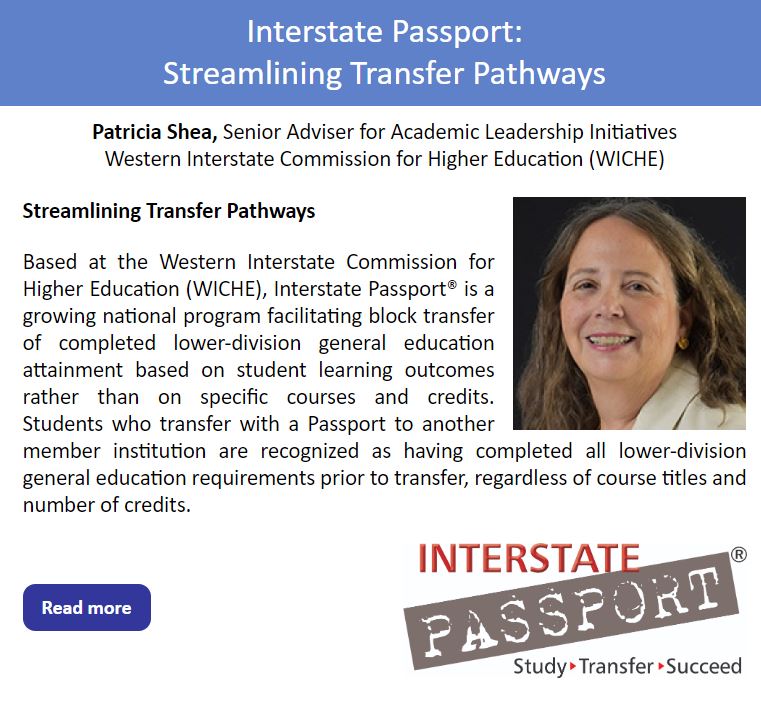Third Regional University in Alaska to join National Initiative
June 2, 2020
Boulder, Colo. – The University of Alaska Southeast is the 42nd higher education institution in the country to join the Interstate Passport Network. The third regional university of the University of Alaska system, the University of Alaska Southeast (UAS) joins the University of Alaska Anchorage and the University of Alaska Fairbanks as a member of the national program of two- and four-year colleges and universities that streamlines the transfer process for students.
“The University of Alaska Southeast is pleased to join other Alaskan universities in the Interstate Passport Network,” said UAS Chancellor Rick Caulfield. “Our goal is to make it even easier for students to access quality educational opportunities no matter their location.”
With campuses in Juneau, Ketchikan and Sitka, UAS serves all of southeast Alaska through campus and online programs. Taking advantage of its unique location that includes the Inside Passage and the Tongass National Forest, the university offers programs in biology and marine biology, environmental science, mine training and fisheries technology, as well as teacher education and educational leadership, liberal arts, business and public administration and health information management. In addition, UAS maintains formal partnerships with the Sealaska Heritage Institute, the Central Council of Tlingit and Haida Indian Tribes of Alaska, and Ketchikan Indian Community – advancing the cultures of the Tlingit, Haida, and Tsimshian peoples.
University of Alaska Southeast serves approximately 5,000 undergraduates and offers 75 degrees and certificates through the School of Arts and Sciences, School of Career Education and Alaska College of Education. It supports a wide array of research partnerships and fosters partners in industry to provide state-of-the-art training equipment, internships and career paths.
The Interstate Passport program was founded in 2011, and became fully operational in 2016. Students who earn a Passport, which encompasses lower-division general education and is based on learning outcomes instead of course-by-course articulation, can transfer to a Network institution in another state and have their learning recognized and general education credits accepted. All students from UAS who earn a Passport can now more easily transfer to any Network member institution without having to repeat or take additional coursework to satisfy general education requirements.
“I am very excited that UAS has become a part of the Interstate Passport Network! This program will allow students from other states to transfer easily to UAS and have their credits counted as they pursue their education and career goals.” said UAS Provost Karen Carey.
Nearly four in 10 college students will transfer institutions at least once during their college careers, and almost a quarter of those will enroll in an institution in another state, according to data from the National Student Clearinghouse. Until now, transferring between schools – especially across state lines – has been made more difficult and expensive by lengthy credit evaluation processes and loss of credit already earned.
“We are very pleased that the University of Alaska Southeast joined Network days after the University of Alaska Fairbanks. Now all students enrolled in the University of Alaska system can benefit by earning a Passport.” said Anna Galas, director of academic leadership initiatives at WICHE. “Even for students who don’t transfer, earning a Passport can be beneficial. Because of its specifically defined learning outcomes, the Passport can become a widely recognizable documented completion benchmark from which employers can gauge a prospect’s skill level and readiness for a job.”





